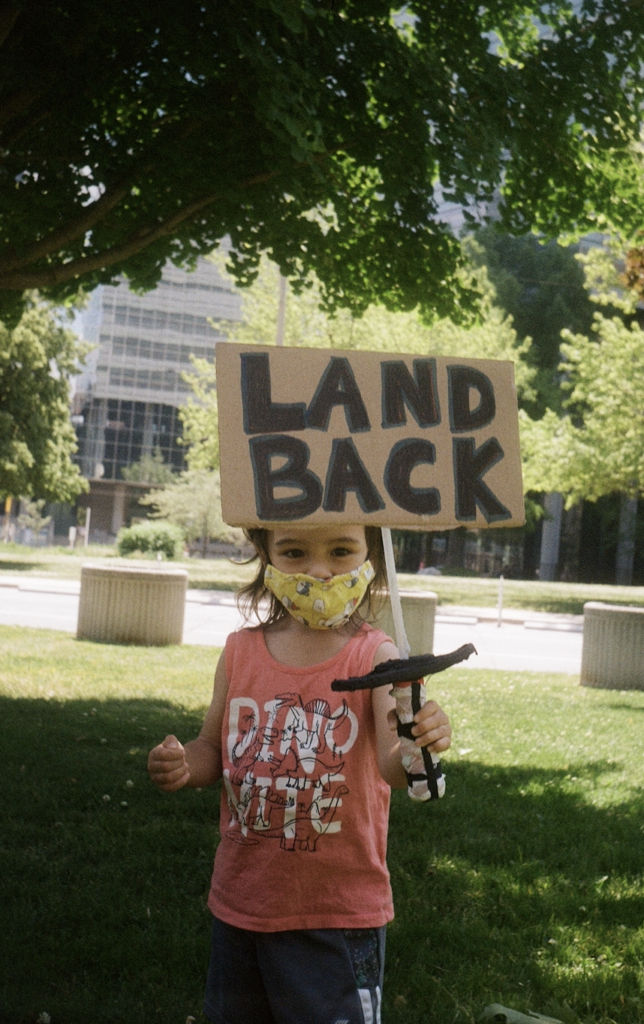Photos and text by Bronwyn Cragg, a YCLer in Toronto (Dorise Nielsen club)
On June 6th, 2021, Indigenous people from across Turtle Island and their allies convened at Queen’s Park in Toronto. The week prior, the remains of 215 children were found in an unmarked grave at the former site of Kamloops Indian Residential School, one of over 130 residential schools across Canada that operated until the mid-1990s.
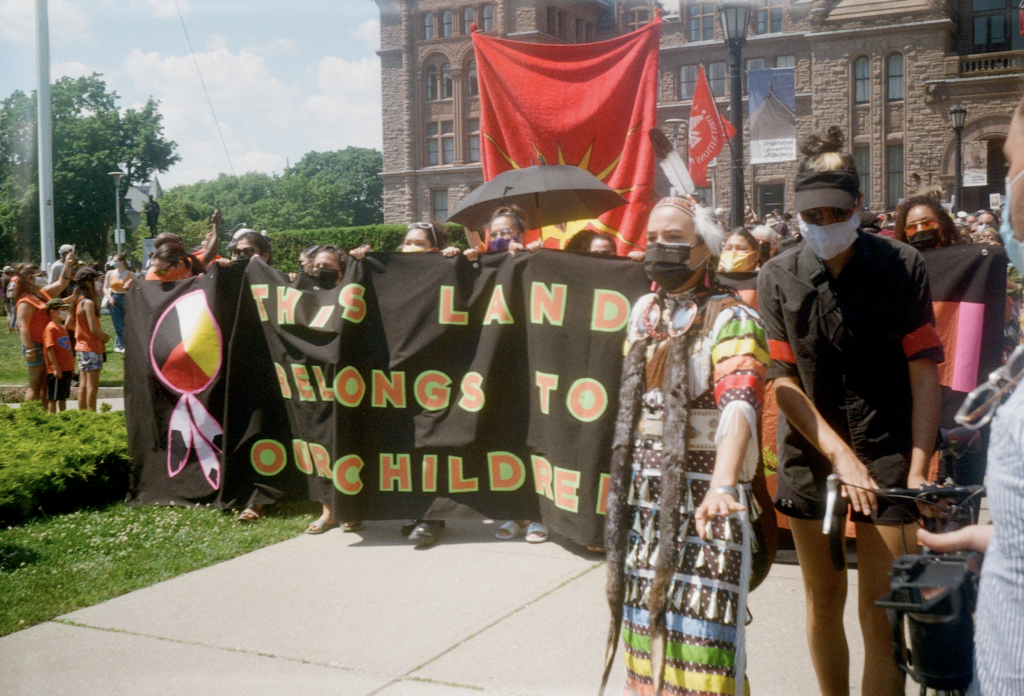
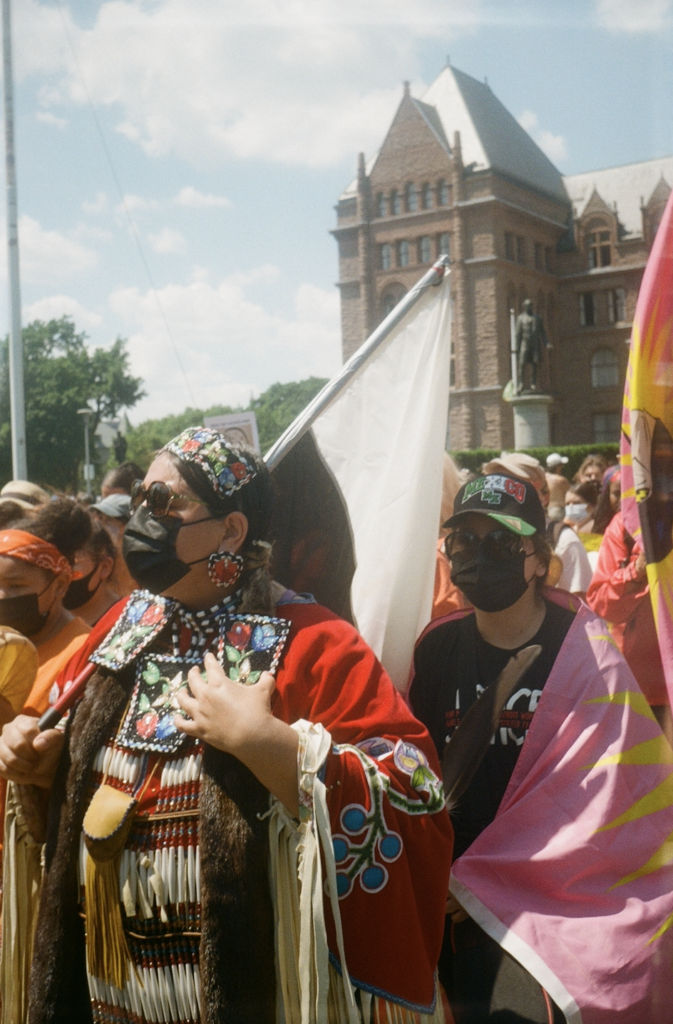
These “schools” were one of the most violent tools of the colonial system in Canada, and operated with the goal of the forced assimilation of Indigenous peoples in Canada. Generations of children endured severe physical, sexual, and mental abuse, and these “schools” had a mortality rate of up to 60%. The discovery of these children came as no surprise, but reopened wounds that have yet to begin healing.
Beginning with ceremony, song, and the burning of sage, the Bring Our Children Home memorial began in Queen’s Park, with Indigenous people leading the procession. Attendees came dressed in orange, a tradition that originated with residential school survivor Phyllis Jack Webstad, whose orange shirt, gifted by her grandmother, was stripped from her during her first hours at a residential school. The orange shirt, and the colour orange in general, has now become a reminder of the genocide of Indigenous peoples and a symbol used to call for reconciliation.
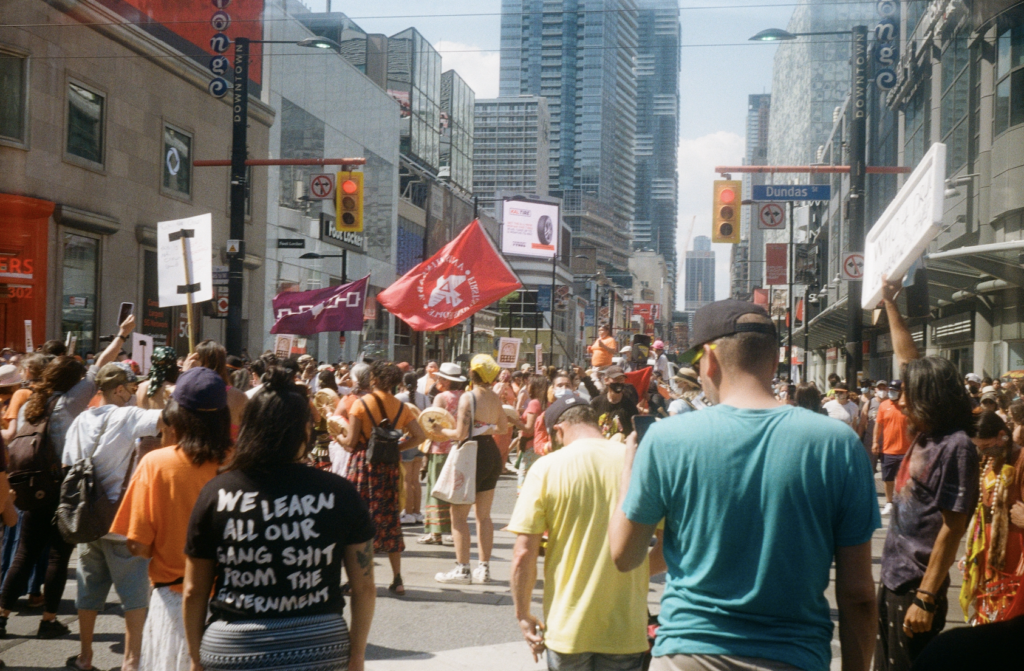

The march, thousands strong, proceeded through Toronto’s downtown core, stopping twice for round dances and the burning of sage at University and Dundas, and then Yonge and Dundas. Despite some agitation from observers at Yonge-Dundas Square, the march remained peaceful and united.
The ultimate destination of this memorial would be the Egerton Ryerson statue at X (Ryerson) University. Ryerson, the university’s namesake, was one of the key figures in the development of the colonial residential school system in Canada. Over the past few years, calls for the removal of the statue have become louder, alongside the renaming of the university. Recently, faculty and students have refused to use the university’s name, referring to it instead as “X University”. The university has called for patience as it “consults” with community members, asking for its Standing Strong (Mash Koh Wee Kah Pooh Win) Task Force on the subject to be given more time.
More time to consult was not needed. As the memorial made its way to the statue of Ryerson, one attendee could be heard saying, “I am a member of Siksika Nation, and I want this statue removed.” Marchers hung flags of their nations around the statue and gathered in a circle. Dozens of children’s shoes were placed at the base of the statue, symbolizing the children — well over 215 — killed in the residential school system. Support of the gathering came from groups like Sikhs for Solidarity, who distributed food and water to attendees — much appreciated in the 34°C weather and blazing sun.
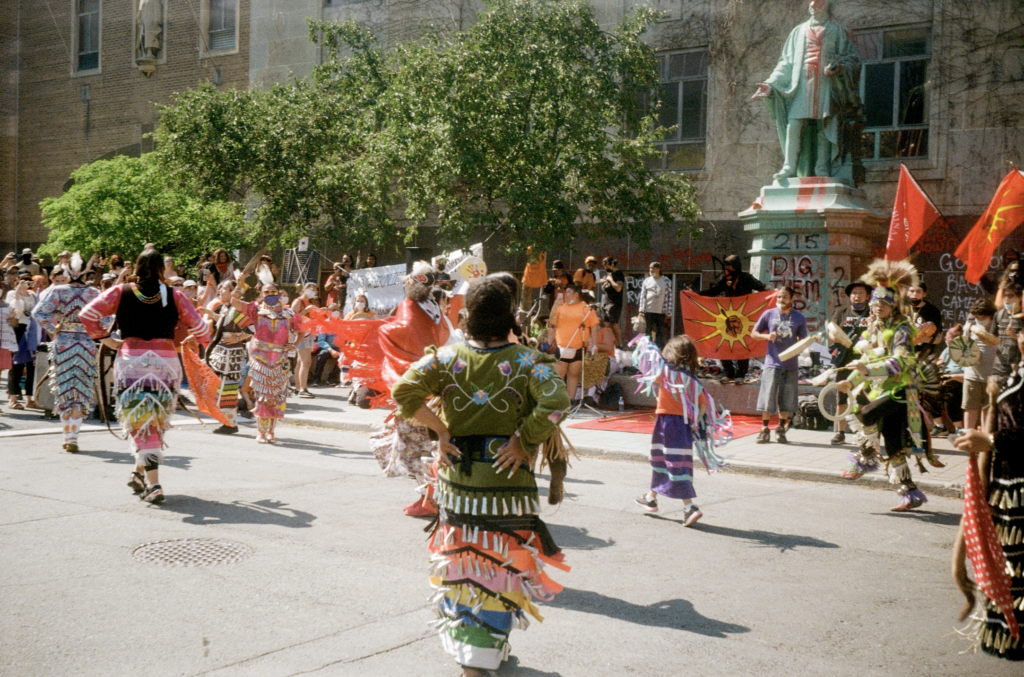
The weather did not, however, exhaust any attendees. Quickly after regrouping, another ceremony was held, and a larger round dance took place. Organizers called for dancers of all ages to make their way to the centre of the gathering, and attendees gave way.
After the second ceremony, residential school survivors and their children recounted stories of abuse and pleaded to know what happened to their disappeared friends. Some shared the names of their abusers and emphasized that, although they survived to see their grandchildren and great-grandchildren grow up, over half of these children did not.
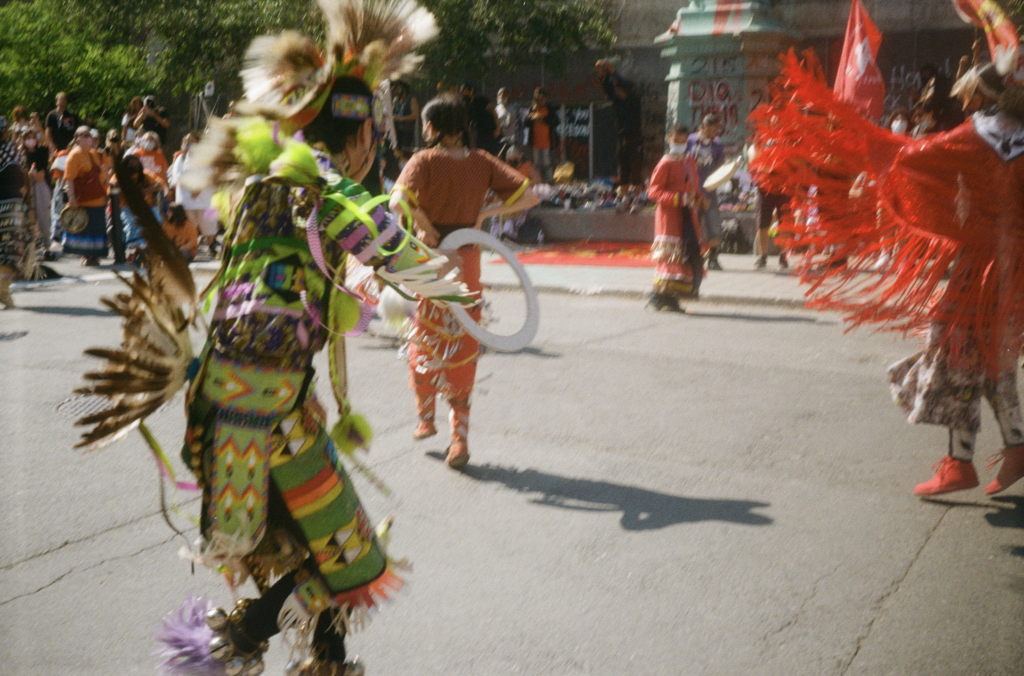
The ceremony was brought to a close in the afternoon. Later in the evening, Indigenous people were able to take down the statue of Egerton Ryerson. Symbolically avenging the thousands of children killed in residential schools, the statue of Ryerson was beheaded, made to hold children’s shoes, and thrown into the harbour. The head of the statue later made its way to 1492 Land Back Lane, where it is now on display.
X University says it will not replace the statue, but it is still unclear what will happen to its name. More pressingly, the Government of Canada continues to ignore the majority of the 94 calls for action raised by the Truth and Reconciliation Commission. It is also unclear what will happen to the bodies of these 215 children, but their discovery has led to calls for the search of other former residential school sites.
